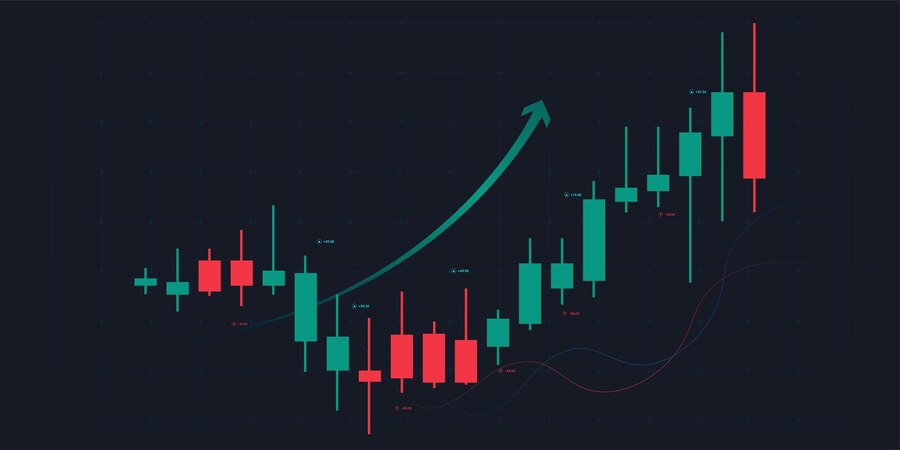DeMark Indicators are a set of proprietary technical analysis tools developed by a renowned trader and analyst called Tom DeMark.
These indicators are designed to help traders identify market trends, potential reversals, and optimal entry and exit points.
DeMark’s work focuses on the notion that price action tends to move in patterns, and by recognizing these patterns, traders can gain a competitive edge.
In This Post
DeMark Indicators for Forex Trading
DeMark Indicators are a collection of tools used to analyze price trends and predict future market behaviour.
These indicators are different from traditional moving averages, oscillators, or trend-following tools, as they focus more on the exhaustion of trends rather than their continuation.
The primary DeMark Indicators include:
- TD Sequential
- TD Lines
- TD Combo
- TD Range Expansion Index (TD REI)
- TD Differential
1. TD Sequential
The TD Sequential is perhaps the most well-known of the DeMark Indicators. It is designed to identify potential turning points in the market by analyzing the exhaustion of a trend. This indicator works in two phases: the Setup and the Countdown.
Setup Phase
- A buy setup occurs when there are 9 consecutive bars where the close of each bar is lower than the close of four bars earlier.
- A sell setup happens when there are 9 consecutive bars where the close is higher than the close four bars earlier.
Countdown Phase
After the setup phase, the countdown begins. In a buy countdown, traders look for 13 consecutive bars where the close is lower than the low two bars earlier, signalling the potential end of a downtrend.
For a sell countdown, traders look for 13 consecutive bars where the close is higher than the high two bars earlier.
Once the countdown is completed, the indicator signals that the current trend may be exhausted and that a reversal could occur.
How to Use TD Sequential in Forex Trading
i. Buy signal
When a 9-bar buy setup is followed by a completed 13-bar buy countdown, it indicates that the downtrend may be exhausted, and a bullish reversal is likely.
ii. Sell signal
Similarly, when a 9-bar sell setup is followed by a completed 13-bar sell countdown, it suggests the uptrend is losing strength, and a bearish reversal is imminent.
2. TD Lines
TD Lines is a trendline-based tool designed to identify potential support and resistance levels in the market. These lines are drawn by connecting recent price highs and lows.
How to Draw TD Lines
i. Bullish TD Line
Drawn by connecting the low of two previous bars where the price has not exceeded the low of either bar.
ii. Bearish TD Line
Drawn by connecting the high of two previous bars where the price has not exceeded the high of either bar.
Once these lines are drawn, they act as dynamic support and resistance levels. When the price breaks through a TD Line, it often indicates that a trend reversal or continuation may occur.
How to Use TD Lines in Forex Trading
i. Buy signal
When the price breaks above a bearish TD Line, it signals that the downtrend may be over, and a bullish trend could begin.
ii. Sell signal
When the price breaks below a bullish TD Line, it suggests the uptrend may be over, and a bearish move is likely.
3. TD Combo
The TD Combo indicator is similar to the TD Sequential, but it places more emphasis on identifying the exhaustion of trends. The TD Combo works in two stages: the Setup and the Countdown.
Setup
- A buy setup requires 9 consecutive bars where the close is lower than the close four bars earlier.
- A sell setup requires 9 consecutive bars where the close is higher than the close four bars earlier.
Countdown
The TD Combo countdown differs from the TD Sequential because it doesn’t require the price to meet specific highs or lows; instead, it focuses more on the number of consecutive bars.
Once the countdown is complete, the TD Combo signals that a reversal may occur.
How to Use TD Combo in Forex Trading
Buy signal
When the buy countdown is complete, it indicates that the downtrend may be exhausted, and a bullish reversal could follow.
Sell signal
When the sell countdown is complete, it suggests that the uptrend may be exhausted, and a bearish reversal is likely.
4. TD Range Expansion Index (REI)
The TD Range Expansion Index (TD REI) is an oscillator that measures overbought and oversold conditions in the market. The REI ranges from -100 to +100, and is used to identify potential reversals.
How to Use TD REI in Forex Trading
i. Overbought condition: When the REI is above +60, the market is considered overbought, signaling a potential bearish reversal.
ii. Oversold condition: When the REI is below -60, the market is considered oversold, indicating a potential bullish reversal.
This indicator is particularly useful in ranging markets where price action oscillates between support and resistance.
5. TD Differential
The TD Differential is another oscillator designed to highlight momentum shifts in the market. Unlike the TD REI, the TD Differential focuses on divergences between price action and momentum, helping traders spot when a trend is losing strength.
How to Use TD Differential in Forex Trading
i. Bullish signal
When the price makes a lower low, but the TD Differential makes a higher low, it indicates a bullish divergence, signalling a potential upward reversal.
ii. Bearish signal
When the price makes a higher high, but the TD Differential makes a lower high, it indicates a bearish divergence, suggesting a potential downward reversal.
Advantages of DeMark Indicators
1. Early reversal signals
DeMark Indicators are highly effective in identifying trend exhaustion, offering early signals for potential reversals.
2. Versatility
These indicators can be applied across various markets, including forex, stocks, and commodities, and work on multiple timeframes.
3. Support and resistance
TD Lines provides a way to determine dynamic support and resistance levels, which are more adaptive than traditional methods.
Limitations of DeMark Indicators
1. Complexity
Some DeMark Indicators, especially TD Sequential and TD Combo, require a deep understanding of their rules and interpretation, making them challenging for beginners.
2. Lagging nature
Like many technical indicators, DeMark Indicators can sometimes lag behind price action, leading to late trade entries.
3. False signals in choppy markets
In ranging or sideways markets, these indicators may produce false signals, especially if not confirmed by other tools.
Frequently Asked Questions
1. What is the TD Sequential indicator, and how does it help in forex trading?
The TD Sequential indicator identifies potential trend exhaustion and reversal points by analyzing price action over consecutive bars.
A buy signal occurs after a 9-bar buy setup followed by a completed 13-bar buy countdown, while a sell signal occurs after a similar pattern for a sell setup and countdown.
2. How do TD Lines help identify support and resistance levels?
TD Lines are trendlines drawn by connecting recent price highs and lows, which act as dynamic support and resistance levels.
When the price breaks above a bearish TD Line or below a bullish TD Line, it signals a potential trend reversal.
3. What is the TD Range Expansion Index (REI) used for in forex trading?
The TD REI is an oscillator that measures overbought and oversold conditions in the market.
When the REI exceeds +60, the market is considered overbought (bearish signal), and when it drops below -60, it is considered oversold (bullish signal), indicating possible reversals.
Conclusion
DeMark Indicators offer a powerful set of tools for forex traders looking to identify trend reversals, dynamic support and resistance levels, and market exhaustion points.
While they require a bit of learning and experience to use effectively, these indicators can be valuable additions to your technical analysis toolkit.
When combining DeMark Indicators with other technical tools, such as moving averages or volume analysis, they become even more robust and reliable in helping traders go through complex world of forex markets.




